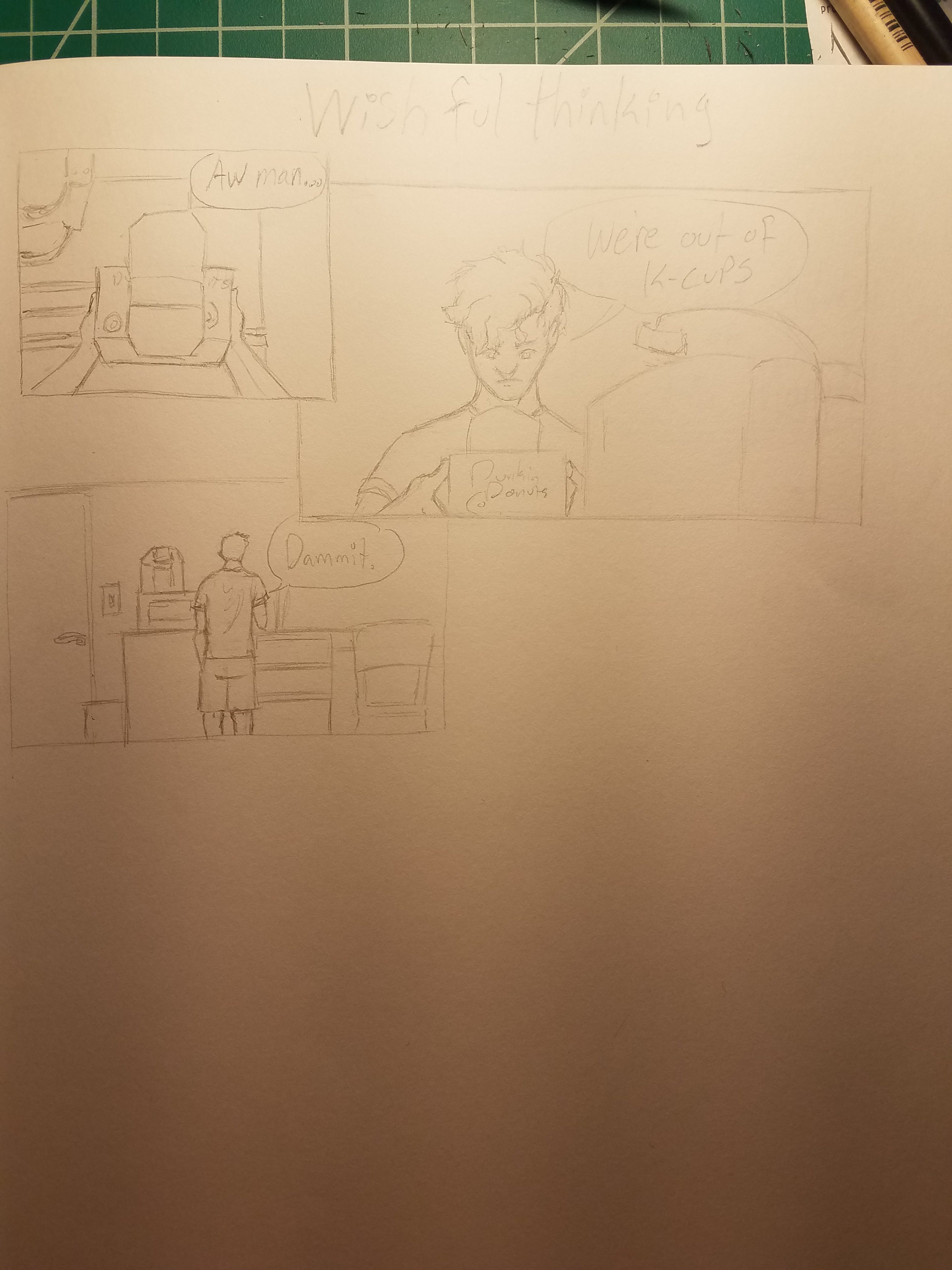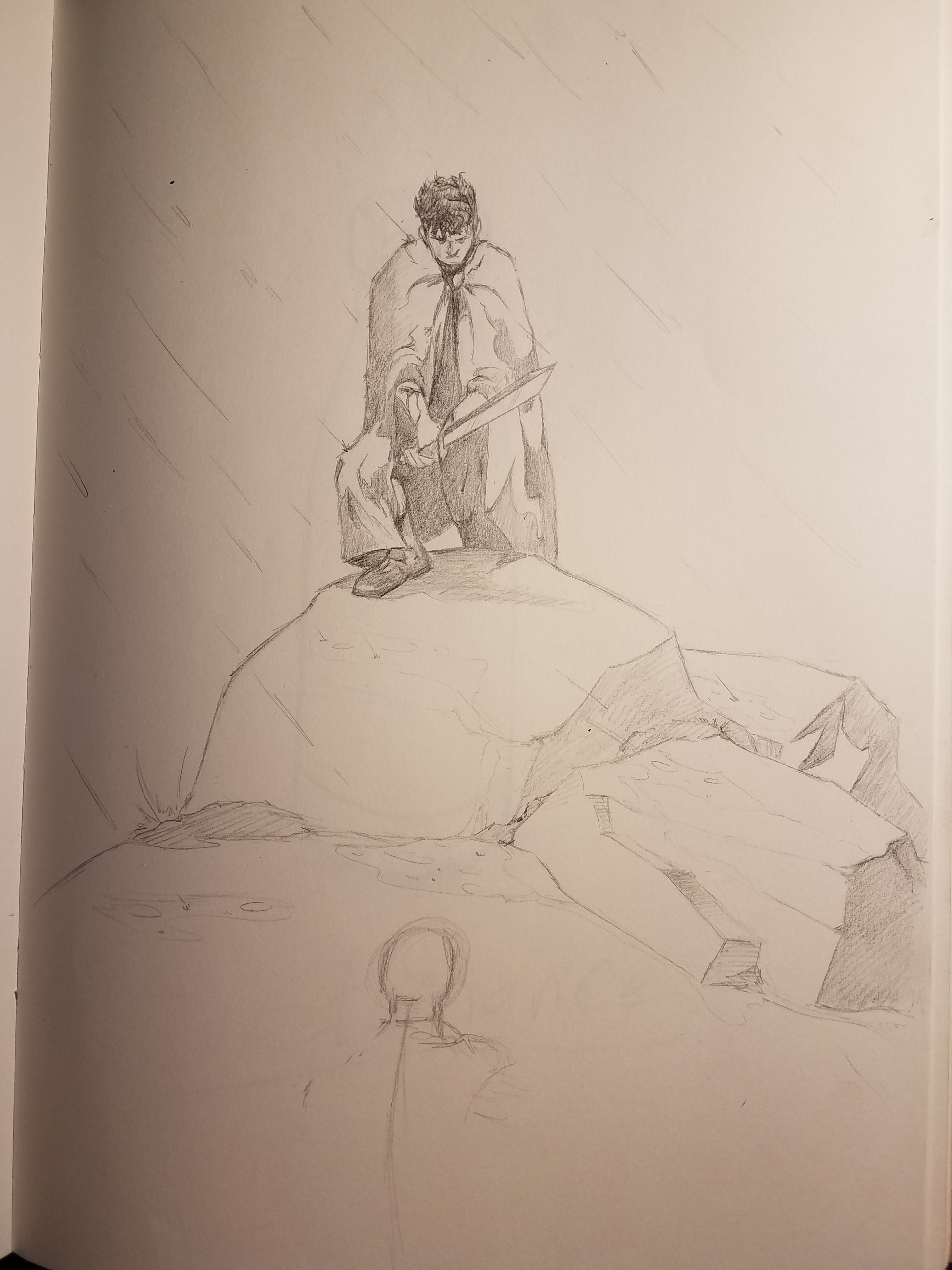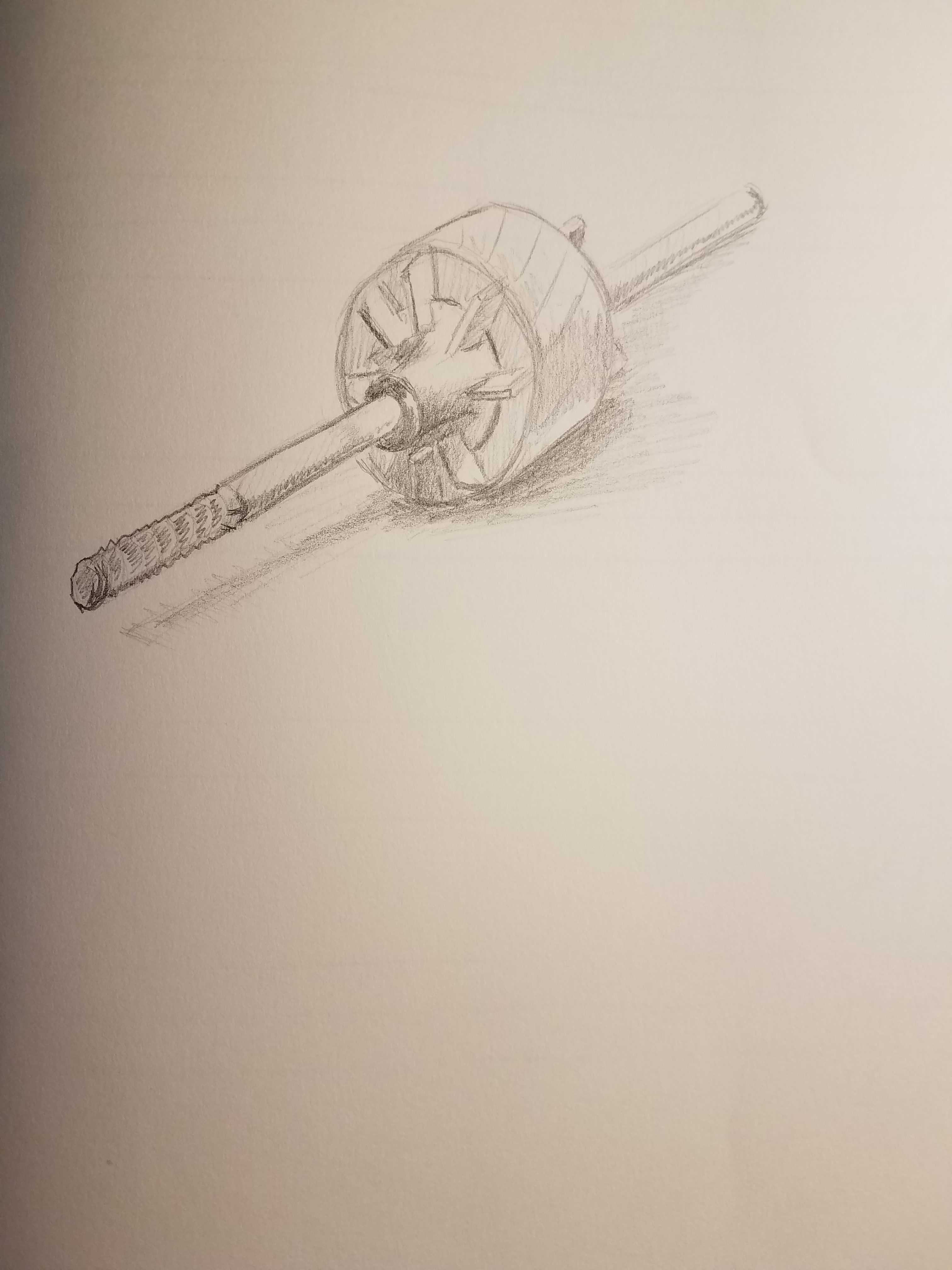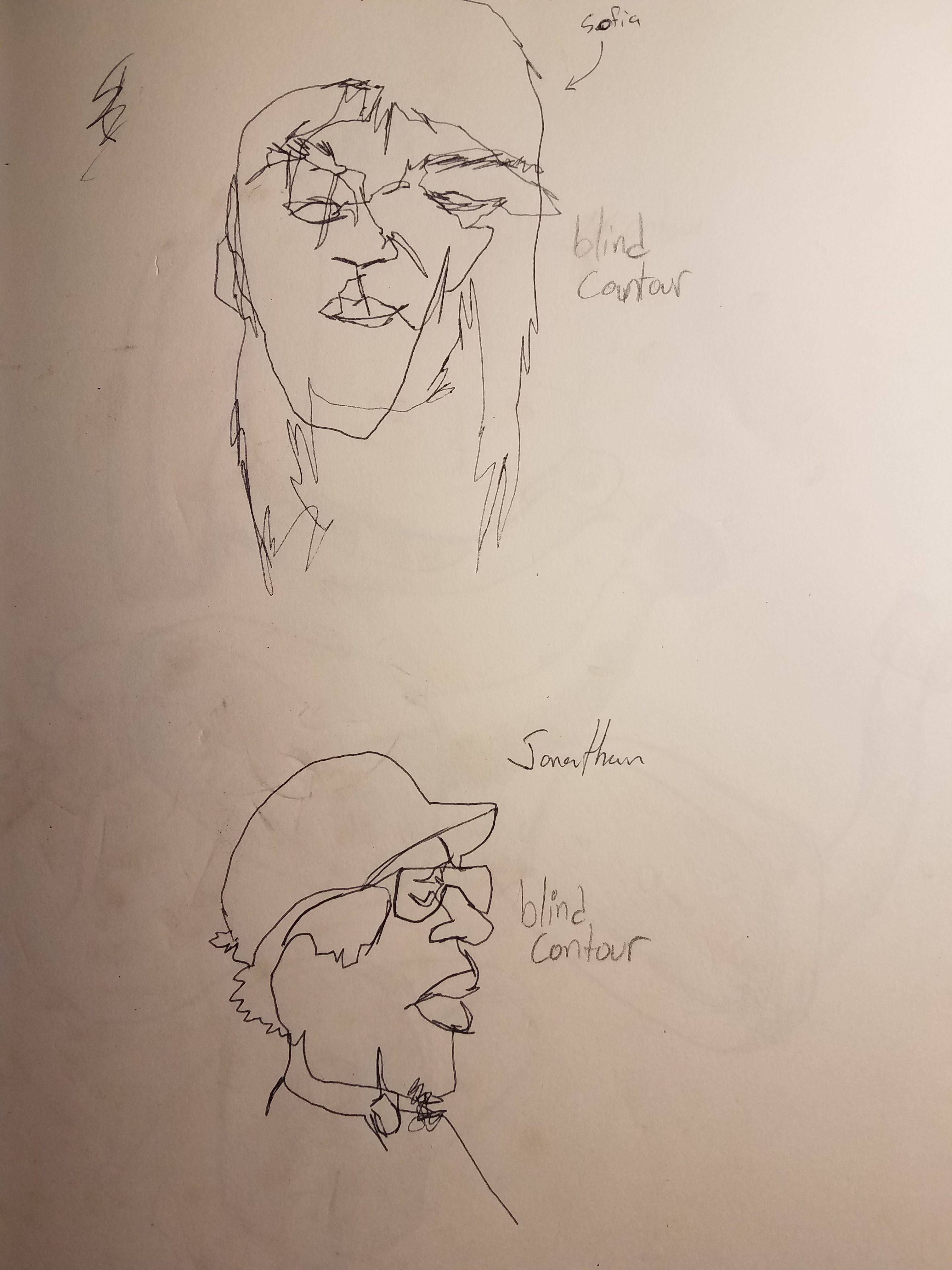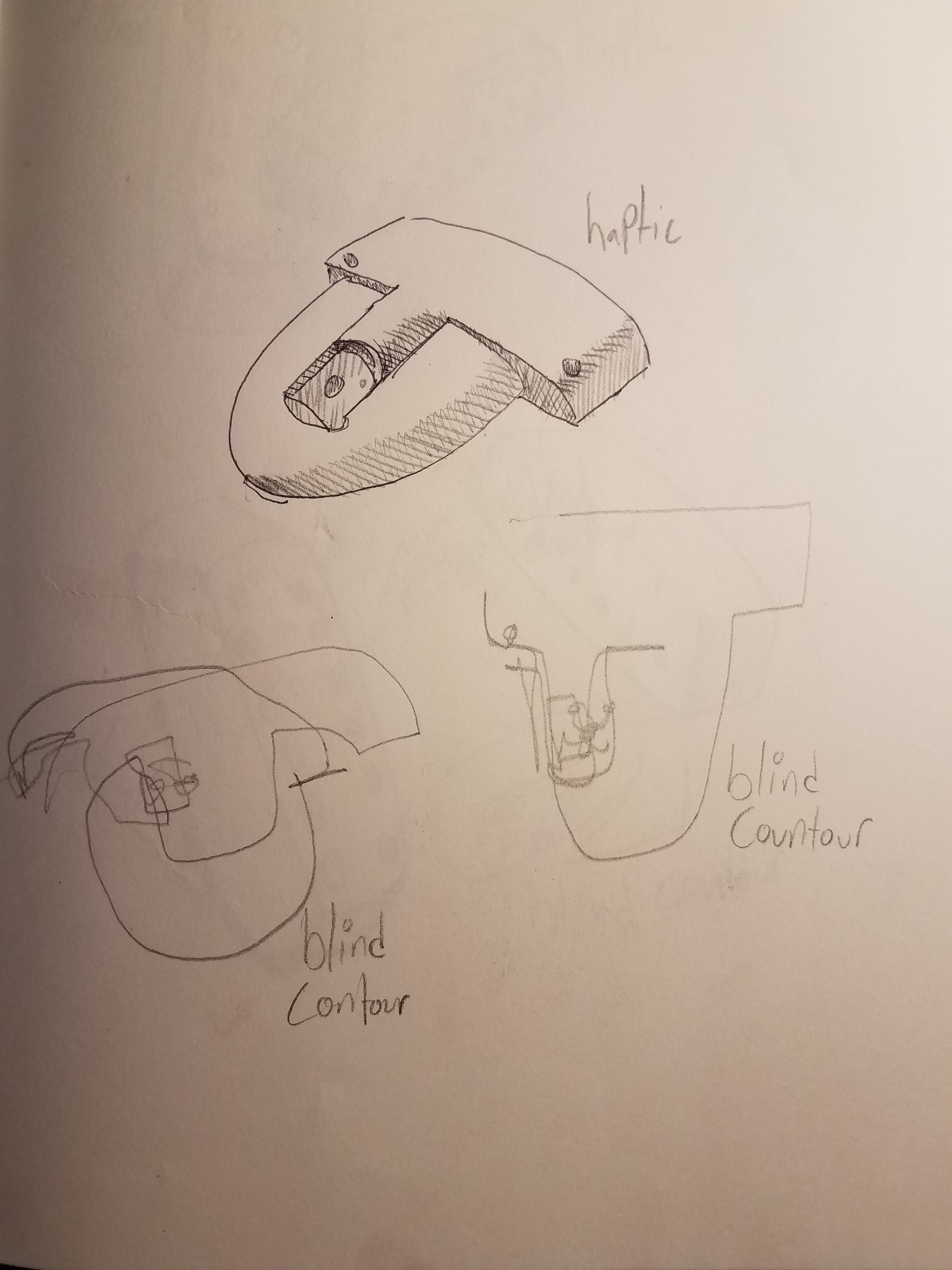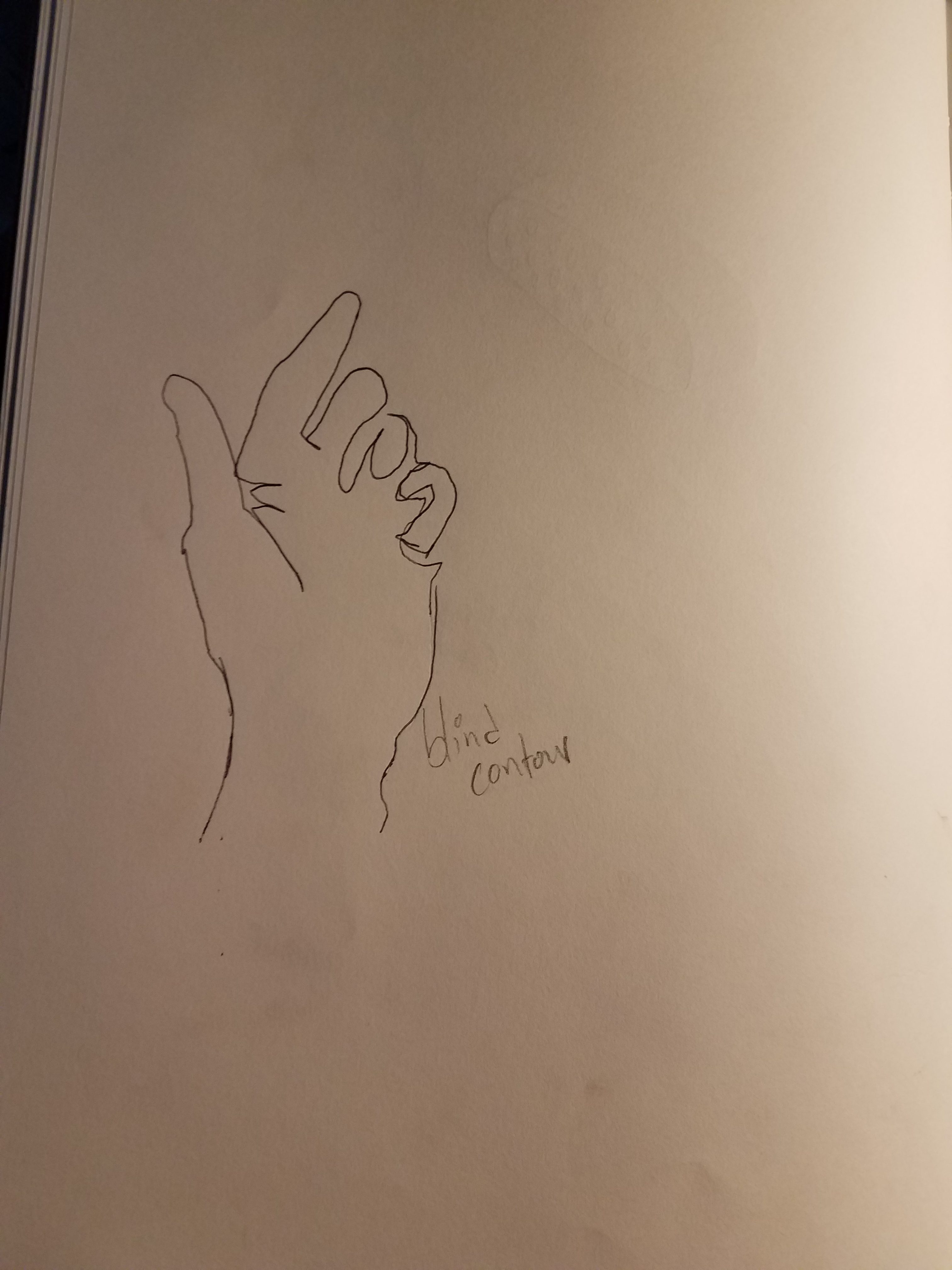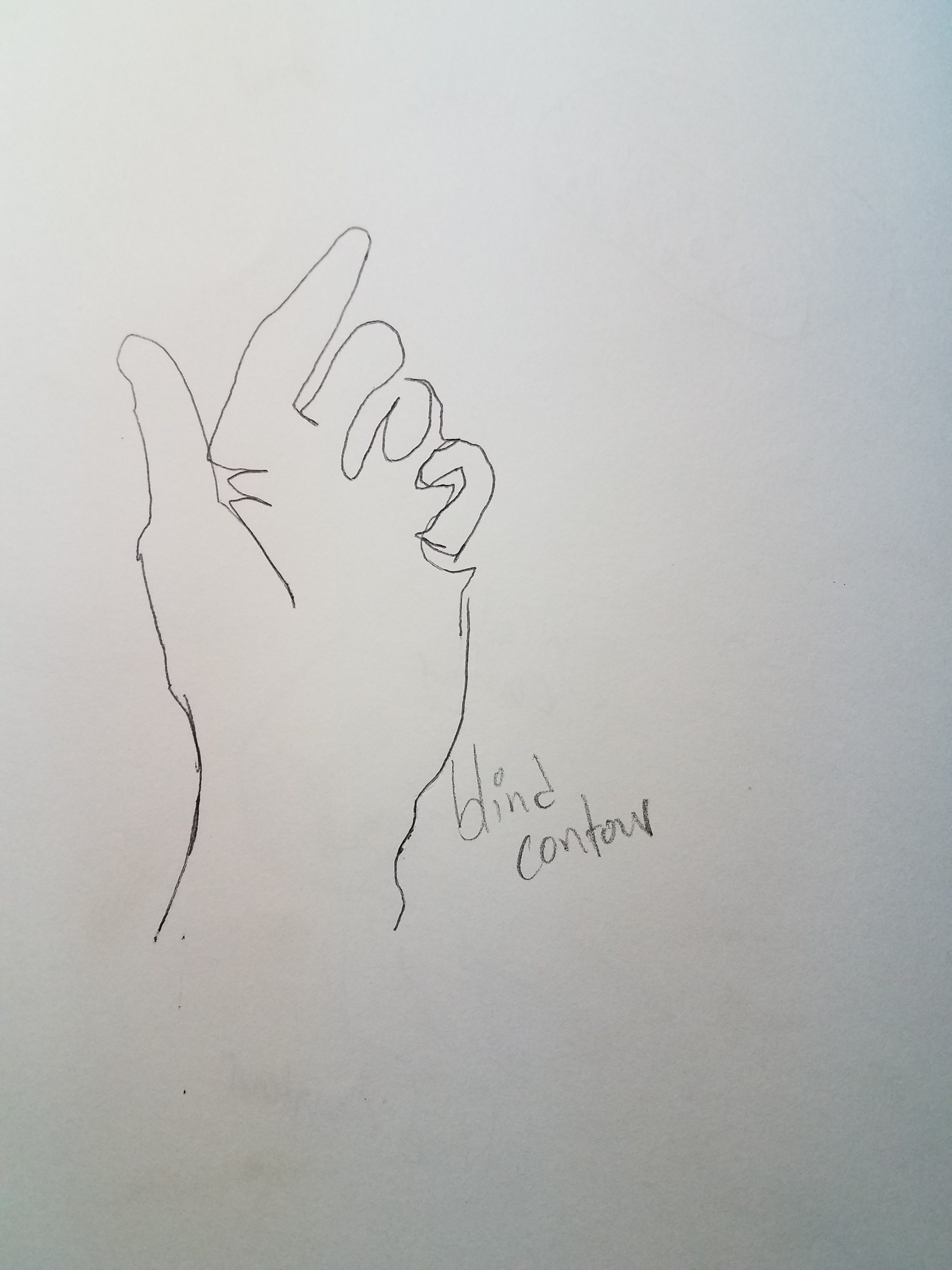I’ll begin this synthesis by discussing the first assignment, called Take Something Apart. Within this assignment we were tasked with finding an object that we would deconstruct without damaging the inner components. This served as an introduction to the composition of everyday objects and the design that goes into them. the object I chose was a metal fan that I found on 15th street,
 However, had I paid attention to what we were going to do ahead of this assignment, I wouldn’t have picked an object this large, as I observed that many of my classmates picked smaller, more intricate, electronic objects. Which would be easier to transport as they’re not so cumbersome. additionally, I imagine they’re deconstruction went smoother as the components are contained compactly within its shell. Besides that, the fan was an interesting object because it’s parts were largely mechanical instead of electronic, as there were no circuit boards or chips. I feel this provides a different learning experience, because during the process of taking it apart, I gradually began to understand the kinetic forces at work should the fan turn on, as it relied largely on the movement of the gear component hidden in the back casing. After fully taking the fan apart, I read this passage within my text The Culture of Time and Space that stated, “We entirely shun the vague word of ‘space’, of which, we must honestly acknowledge, we cannot form the slightest conception and we replace it with ‘motion relative to a practically rigid body of reference“, now I recognize the train of thought this provoked was a stretch, but it really made me consider the importance of compensation for these moving parts. As the inner components, such as the gears and motor axle, power fan blades that have a radius nearly twice as large as the casing they’re in. Now the motor itself took up a large portion of that interior space, so its not the fact that it can rotate the blades that strikes me as intriguing, rather the sort of “dwarfing” effect the smooth, dome-like, casing has on the perception of the viewer. Or, in relation to the text, the point of reference the viewer has in terms of the physical space the fan occupies, and what it encases.
However, had I paid attention to what we were going to do ahead of this assignment, I wouldn’t have picked an object this large, as I observed that many of my classmates picked smaller, more intricate, electronic objects. Which would be easier to transport as they’re not so cumbersome. additionally, I imagine they’re deconstruction went smoother as the components are contained compactly within its shell. Besides that, the fan was an interesting object because it’s parts were largely mechanical instead of electronic, as there were no circuit boards or chips. I feel this provides a different learning experience, because during the process of taking it apart, I gradually began to understand the kinetic forces at work should the fan turn on, as it relied largely on the movement of the gear component hidden in the back casing. After fully taking the fan apart, I read this passage within my text The Culture of Time and Space that stated, “We entirely shun the vague word of ‘space’, of which, we must honestly acknowledge, we cannot form the slightest conception and we replace it with ‘motion relative to a practically rigid body of reference“, now I recognize the train of thought this provoked was a stretch, but it really made me consider the importance of compensation for these moving parts. As the inner components, such as the gears and motor axle, power fan blades that have a radius nearly twice as large as the casing they’re in. Now the motor itself took up a large portion of that interior space, so its not the fact that it can rotate the blades that strikes me as intriguing, rather the sort of “dwarfing” effect the smooth, dome-like, casing has on the perception of the viewer. Or, in relation to the text, the point of reference the viewer has in terms of the physical space the fan occupies, and what it encases.
I did experience difficulties when I arranged the objects to be photographed, as the fan guards and blade array took up a lot of space when placed in a frame. In order to capture the photos I had to stand on a stool in order to get all the objects in frame. 
After the first assignment, we moved onto the Orthographic Projection assignment during week 2, serving as an introduction to technical drawing. For me, this assignment shifted the focus from objects being considered as components in a larger object to being their own individual objects. This is because the organised layout of technical drawing and specifics in regards to the objects called for more attention to detail. Which is different from the previous assignment, as the measurements that were put into the material index were mostly approximate, or rather more of a “box” around the object. This shift in focus distanced my perception of the objects from considering them as partitions of a larger space to the equivalent of detaching them and placing them within their own magnified place of occupancy.
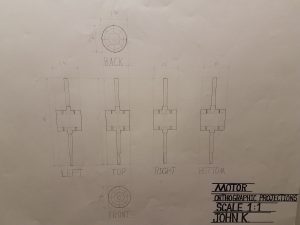
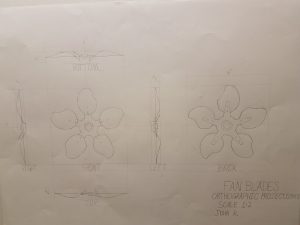
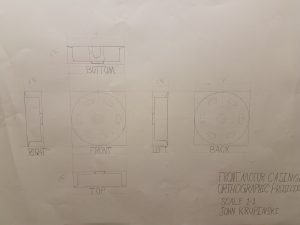
It was around assignment 3 that the things started to become more conceptual than objective. After this shift in focus as a result of the second project, I feel as a class we became very familiar with the objects we chose. studying and measuring them caused for an increased awareness of their dimensions, meaning the object’s real appearance was fully realized within the mind’s eye. When we switched objects with somebody else, it brought a new stimulus into an assignment that was already shedding the formalities of measuring an object. Conceptually it deconstructed the formality two times over, with a method of rendering that did not utilize rulers or squares and being completely unfamiliar with the object given to us. As I cited in a previous post, from The Culture of Time and Space “natural scientists began to investigate the relation between the structure of living organisms and their spatial orientation“, I believe blind contour drawings demonstrate a form of spatial orientation. This is because its purely a product of perception, as no corrections can be made to the drawing in the process of rendering what the viewer is observing. Personally I found drawing faces in blind contour interesting because of how its still recognizable as a face despite it not being anatomically correct at all. The human brain does this often, as people see faces in the front of cars or in trees, whatever slightly resembles a face. Most of the time I couldn’t tell what an object was in another persons drawing but I could tell when a face was meant to be there, that’s just something I found interesting.

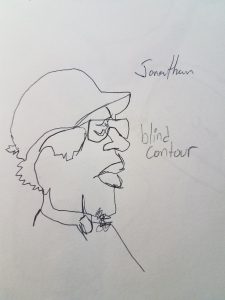
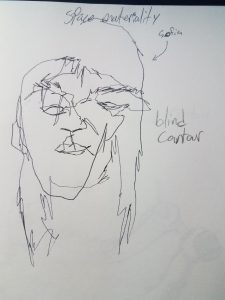
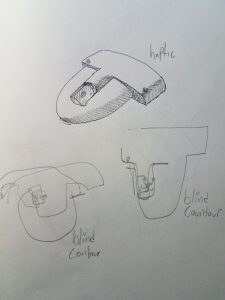
It’s at this point that I see a similarity between this process of rendering images in a new frame of thought and The Culture of Time and Space, as it describes the transitional period of thought in the 1880s to 1918. They went through a similar process of deconstruction of what would’ve been considered formalities at the time, like for example, questioning euclidean geometry, which gave rise to theoretical mathematics as well as theoretical physics. I’m not saying the deconstruction of objectivity in regards to our objects have led to ground breaking breakthroughs, but the lines between object, representation, and entirely new object are blurred. This becomes more evident within the next assignment, that is the fourth assignment that required us to make three dimensional interpretations of assignment three using wire. This is where the concept of a “new object” is introduced, as these wire frames are an interpretation of an interpretation. They hardly resemble the object that was originally drawn, so in my opinion, they classify as an object separate to the original three dimensional object. Which is interesting because it’s essentially a game of telephone, but with renderings. Meaning, we took something three dimensional, interpreted it with purely subjective forces at work on the two dimensional plane, then brought the stimulus back to the three dimensional plane. One thing I found particularly interesting was how simplified the hand wire forms got with the lesser amount of wire, the 5 foot wire hand is my personal favorite as it still gets the idea across but it isn’t so full of bends and information that it is the most simple out of all the wire frames I created, additionally it wasn’t several feet long like the 15 foot wire hand. This was something I had a problem with, as I found myself wishing I had created something more dense and smaller than expansive.
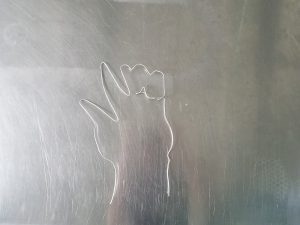
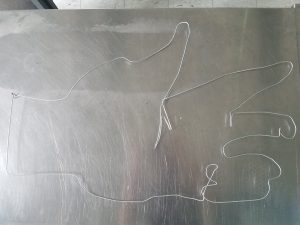
Lastly, we have assignment 5, which required us to create a mobile that relied heavily on balance to display the final stages of these renderings. As I said in the portfolio post specifically describing this assignment, “Since they’re suspended and not rooted to the ground by gravity, the position they intentionally fall into displays the invisible but essential relationship between objects that are reliant on balance and weight distribution“, I was also quoted saying, “This is interesting because these wires do exactly that, they’re artificial forms that “outline” an object that existed in a position at a certain time, serving as a three dimensional “freeze frame” that copies the said object. It however is not a carbon copy, as the hand is not a real hand hanging from a mobile, instead it is a form that implies the idea of a hand.” in response to The Culture of Time and Space when Stephen Kern stated, “ […] and argued that the division of matter into independent bodies with absolutely determined outlines is ‘artificial“, because the whole purpose behind assignment 4 and 5 was to create this sort of artificial but real outline of something the mind put together in reaction to a stimulus. Except assignment 5 put the objects in perspective, as suspending them directly in front of a person immediately puts the objects in relation to whatever is behind them, acting as almost a window encapsulating a space within its frame, this effect is briefly mentioned in The Culture of Time and Space when Kern says, “Edmund Husserl challenged the Cartesian idea that perception takes place in the mind and argued instead that it is a relation between a perceiver and a thing perceived “, I think this perceiver to perceived relationship is prominently demonstrated in assignment. I think out of all 5 assignments, this one was the most the most difficult in terms of execution. As I hadn’t checked ahead to see that we were going to attempt something so reliant on equal weight distribution, so there were many work arounds that I had to do on the spot, this caused for a very different object in reference to the schematic I originally planned out, as I didn’t factor in the actual weight of the wire suspending the pieces up, as well as the obnoxiously large hand. It does however hang and remain doing so, that is the most I can ask for.
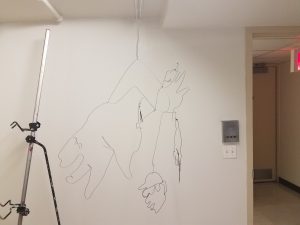
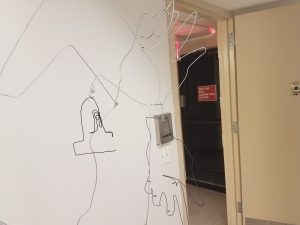
Overall, and in retrospect, I see the past 5 weeks as an introduction to conceptual thinking in terms of objects that occupy the reality we live in, as prior to this, I felt my understanding of space and reality was pretty concrete, as well as black and white. That is, true intepretation (it looks exactly like the object) and untrue interpretation (it doesn’t look like the object at all). I think the common theme within these assignments was a gradual deconstruction of objective, formal, and realistic thinking into a concept, or something that inhabits the subjective part of the brain, an reinterpreting it back into the realm of objectively existing, that is, seeing it “pop” off the two dimensional plane. I think because of this, a lot of modern sculpture that I didn’t really understand makes more sense to me now, because its probable that these professional artists undergo similar processes.

 but expanded on the thought when typing it in Photoshop.
but expanded on the thought when typing it in Photoshop.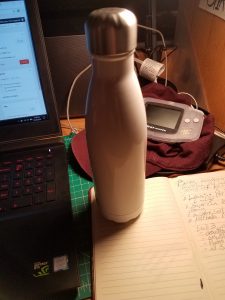
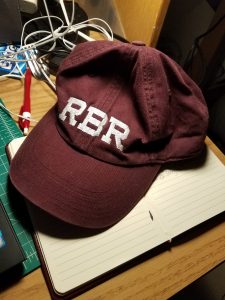
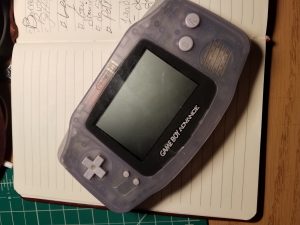 +
+





